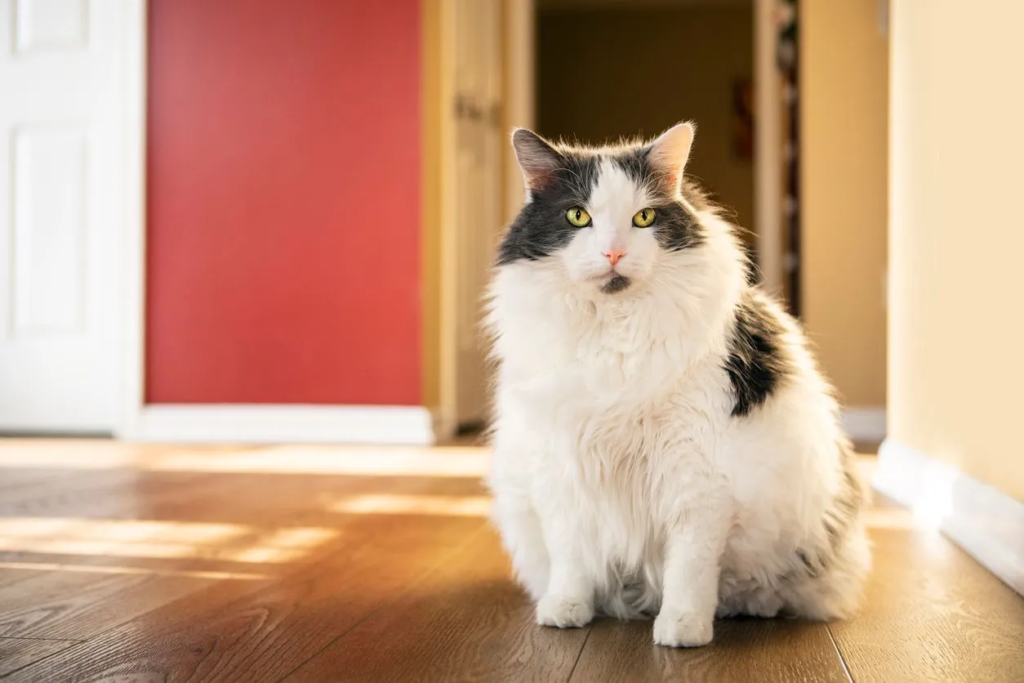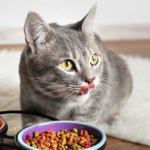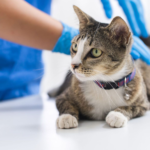Obesity in cats is a growing concern among pet owners and veterinarians alike. Excess weight not only impacts a cat’s quality of life but also increases the risk of developing serious health problems. Understanding the causes of cat obesity, as well as effective prevention and management strategies, is essential for ensuring your feline friend remains healthy and active.

1. Causes of Cat Obesity
1. Overfeeding:
One of the primary causes of obesity in cats is overfeeding. Cats often consume more calories than they expend, leading to weight gain. This can be due to:
- Portion Size: Feeding too much food, even if it’s high-quality, can contribute to weight gain.
- High-Calorie Treats: Frequent or excessive treat-giving can add extra calories to a cat’s diet without providing balanced nutrition.
2. Lack of Exercise:
Cats, particularly those kept indoors, may not get enough physical activity. Lack of exercise contributes to weight gain by reducing calorie expenditure. Common reasons for insufficient exercise include:
- Limited Playtime: Indoor cats may not have enough opportunities for play and physical activity.
- Sedentary Lifestyle: Older cats or those with health issues may be less active.
3. Genetics and Breed Predisposition:
Certain breeds are more prone to obesity. For example, domestic cats with certain genetic backgrounds may have a predisposition to gaining weight. Additionally, metabolic disorders or hormonal imbalances, such as hypothyroidism, can contribute to obesity.
4. Feeding Habits:
Feeding habits, such as free-feeding (leaving food out all day), can lead to overeating. Cats may graze continuously, consuming more calories than needed.
2. Prevention of Cat Obesity
1. Balanced Diet:
- Proper Portioning: Follow feeding guidelines provided by your veterinarian or pet food manufacturer. Measure portions to avoid overfeeding.
- Quality Food: Choose a high-quality, nutritionally balanced cat food. Avoid foods high in fillers or excessive calories.
- Healthy Treats: Limit treats to no more than 10% of your cat’s daily caloric intake. Opt for low-calorie, healthy options.
2. Regular Exercise:
- Interactive Play: Engage your cat in regular play sessions with toys like feather wands, laser pointers, or balls. This encourages physical activity and mental stimulation.
- Environmental Enrichment: Provide climbing structures, scratching posts, and puzzle toys to keep your cat active and entertained.
3. Scheduled Feeding:
- Meal Timing: Establish regular feeding times rather than free-feeding. This helps control calorie intake and prevents overeating.
- Portion Control: Use measuring cups to ensure you’re providing the right amount of food.
4. Regular Health Check-ups:

- Veterinary Visits: Schedule regular vet check-ups to monitor your cat’s weight and overall health. Your vet can provide personalized advice and detect any underlying issues contributing to weight gain.
3. Managing Obesity in Cats
1. Weight Loss Diet:
- Specialized Food: Your veterinarian may recommend a weight management diet that is lower in calories but still nutritionally complete. These diets help cats lose weight gradually and safely.
- Portion Control: Adhere to recommended portion sizes to ensure calorie reduction without compromising nutritional balance.
2. Increased Physical Activity:
- Exercise Routine: Develop a consistent exercise routine tailored to your cat’s age and physical condition. Gradually increase activity levels to avoid overexertion.
- Interactive Toys: Invest in toys that promote exercise and mental engagement. Rotate toys to keep your cat’s interest high.
3. Monitoring Progress:
- Regular Weigh-ins: Track your cat’s weight regularly to monitor progress. Adjust feeding and exercise plans as needed based on your cat’s weight changes.
- Health Monitoring: Keep an eye on your cat’s overall health, including changes in behavior, coat quality, and energy levels. Report any concerns to your veterinarian.
4. Addressing Underlying Health Issues:
- Medical Evaluation: If your cat’s obesity is due to a medical condition, such as hypothyroidism or diabetes, work with your veterinarian to address the underlying issue as part of the weight management plan.
4. Conclusion
Obesity in cats is a significant health issue that can lead to a variety of complications, including diabetes, arthritis, and reduced lifespan. By understanding the causes, implementing preventive measures, and managing weight effectively, you can help ensure your feline friend remains healthy and active. A balanced diet, regular exercise, scheduled feeding, and regular veterinary care are key components of maintaining a healthy weight and enhancing your cat’s overall quality of life. Addressing obesity with a proactive approach will support your cat’s well-being and ensure they lead a long, happy life.


